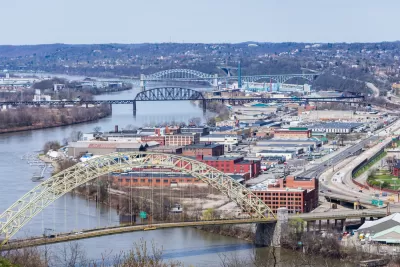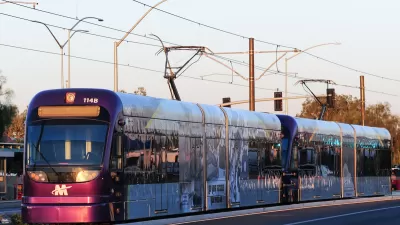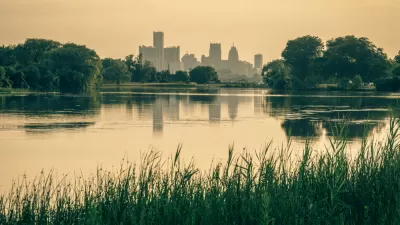To prevent losing funding if the state's interstate highways fall below new federal standards, Pennsylvania is rushing to change its capital investments plans.

"The Pennsylvania Department of Transportation will shift $3.15 billion from local road projects to improvements on the interstate highways over the next nine years," reports Ed Blazina.
"For years, the state has delayed major maintenance work on the state’s interstate highway system while officials waited for an expected influx of federal funds," to explain the reason for the shift. "But now, with no federal money on the horizon and road conditions reaching the point where federal officials could cut existing federal funds because of the state of road conditions, Pennsylvania decided to shift its emphasis to the interstate system."
"The change, approved by the Federal Highway Administration in June, begins this year by taking $150 million statewide from local projects and earmarking the money for interstate work. That will increase by $50 million a year until 2028, when it reaches $3.15 billion."
The article includes a lot more details about how transportation officials are reacting to the shift, and includes several quotes from officials concerned about the state of local roads. The article also includes the history of planning and funding decisions that led to the current changes.
As for the federal policy that precipitated the change, Blaziina also offers this explanation, by way of information shared by Larry Shifflet, PennDOT’s deputy director for planning:
The Federal Highway Administration developed standards that interstate highways must meet certain standards or states could lose money from its National Highway System funds, which account for about half of $1.8 billion in state highway funds. The state is getting perilously close to not meeting those standards, Mr. Shifflet said.
FULL STORY: PennDOT to shift $3.15 billion from local roads to interstate improvements

Manufactured Crisis: Losing the Nation’s Largest Source of Unsubsidized Affordable Housing
Manufactured housing communities have long been an affordable housing option for millions of people living in the U.S., but that affordability is disappearing rapidly. How did we get here?

Americans May Be Stuck — But Why?
Americans are moving a lot less than they once did, and that is a problem. While Yoni Applebaum, in his highly-publicized article Stuck, gets the reasons badly wrong, it's still important to ask: why are we moving so much less than before?

Using Old Oil and Gas Wells for Green Energy Storage
Penn State researchers have found that repurposing abandoned oil and gas wells for geothermal-assisted compressed-air energy storage can boost efficiency, reduce environmental risks, and support clean energy and job transitions.

Minneapolis Bans Rent-Setting Software
Four cities have enacted restrictions on algorithmic software that can inflate rent costs.

Oakland to Add 244 New EV Chargers
Oakland plans to launch its new charging network at eight locations by the end of 2025.

Jane Goodall Inspires with Message of Hope, Resilience, and Environmental Action
Speaking in Pasadena, Jane Goodall offered a hopeful and inspirational message, urging global compassion, environmental responsibility, and the power of individual action to shape a better future.
Urban Design for Planners 1: Software Tools
This six-course series explores essential urban design concepts using open source software and equips planners with the tools they need to participate fully in the urban design process.
Planning for Universal Design
Learn the tools for implementing Universal Design in planning regulations.
Heyer Gruel & Associates PA
City of Moreno Valley
Institute for Housing and Urban Development Studies (IHS)
City of Grandview
Harvard GSD Executive Education
Salt Lake City
NYU Wagner Graduate School of Public Service
City of Cambridge, Maryland





























